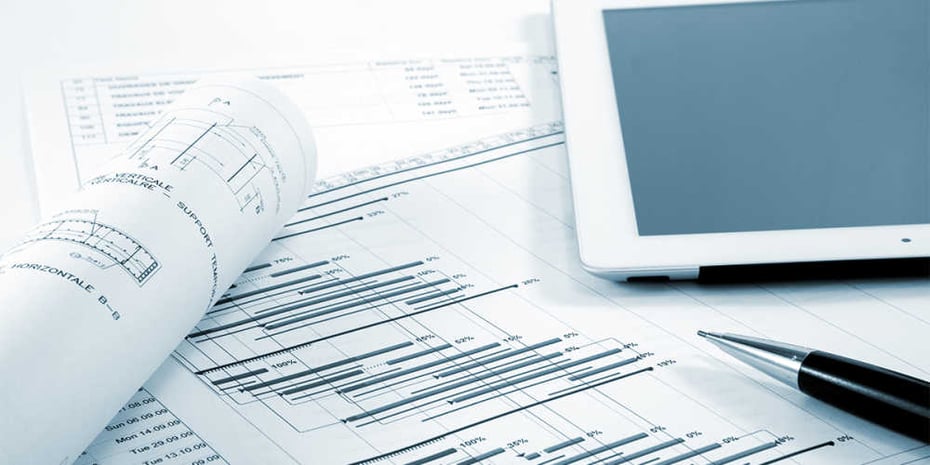Grasping Organization: Boost Effectiveness with Construction Document Management
Grasping Organization: Boost Effectiveness with Construction Document Management
Blog Article
Enhancing Process Efficiency: Architect's Specialist Approaches for Building And Construction Record Management
In the world of architectural design and building and construction, the careful administration of records stands as a foundation for project success. These methods not only make certain smooth task development but additionally hold the key to unlocking enhanced efficiency and precision in the complex realm of building and construction record monitoring.
Key Record Company Methods
When handling building files, one of the essential methods that engineers utilize is developing a effective and organized organization system. This system generally includes categorizing files based on their type, such as drawings, requirements, contracts, and permits. By developing distinctive and clear groups, engineers can swiftly locate particular info when needed, saving time and reducing mistakes in the construction process.
Within each category, designers additionally arrange documents by making use of or creating subfolders numbering systems to denote versions or revisions (construction document management). This hierarchical structure guarantees that one of the most appropriate and existing details is easily available while maintaining a document of adjustments made throughout the project timeline
Furthermore, engineers typically make use of digital record monitoring platforms that supply features like keyword search functions, version control, and access restrictions to improve company and collaboration amongst job stakeholders. These tools improve the record retrieval procedure, promote real-time updates, and assist in seamless interaction, inevitably contributing to the general success of the construction job.
Collaborative Platform Integration
To maximize file management effectiveness in building tasks, engineers flawlessly incorporate collective systems to boost communication and simplify control among task stakeholders. By leveraging joint platforms such as job monitoring software application, cloud-based storage systems, and interaction tools, architects can create a central hub for all project-related papers and interaction channels. These systems permit team members to accessibility, evaluation, and collaborate on papers in real-time, reducing delays and the threat of mistakes associated with traditional record administration techniques.
Collective platform combination additionally cultivates openness and liability within the job group, as all stakeholders have presence into the latest project updates and alterations. By streamlining communication and file sharing, designers can ensure that all staff member are working from one of the most current information, reducing the possibilities of misunderstandings or problems occurring due to out-of-date papers.
Additionally, collective systems make it possible for seamless partnership between engineers, professionals, customers, and various other job stakeholders, promoting an extra natural and efficient job operations. By damaging down interaction obstacles and promoting information exchange, designers can drive efficiency and advancement in building and construction projects, inevitably resulting in successful task outcomes.
Version Control Finest Practices
Applying reliable variation control techniques is vital for keeping record accuracy and uniformity in building and construction projects. By developing a clear system for managing modifications, project groups can ensure that everyone is working from the most up-to-date documentation, lowering the danger of mistakes and inconsistencies during the building stage.
One of the vital finest techniques for variation control is to designate one-of-a-kind identifiers to each file variation. This can be achieved by making use of a numbering system or day stamp that clearly indicates the order of alterations. By plainly classifying each iteration, staff member can conveniently track the development of the paper and determine one of the most current version.

Automation Devices for Effectiveness

File control software, like Procore or PlanGrid, centralizes job paperwork, making it easily available to all stakeholders. These systems permit real-time partnership, version control, and automated backups, guarding versus data loss. Additionally, Building Details Modeling (BIM) software automates the generation of construction illustrations and ensures that changes are integrated throughout all associated papers.
Integrating automation devices with cloud storage solutions even more enhances ease of access and protection. By automating the record administration process, job groups can concentrate their time and initiative on value-adding tasks, eventually enhancing efficiency and job results.
Secure Data Administration Solutions
Successfully taking care of and guarding project information is extremely important in the building have a peek at this website and construction industry to make sure privacy and integrity throughout the job lifecycle. Building firms can utilize encrypted cloud storage solutions to safely keep and share project documents with accredited employees.
Furthermore, utilizing electronic legal rights administration (DRM) tools adds an added layer of security by stopping the unauthorized circulation or replication of task files. Normal data back-ups are necessary to reduce the danger of information loss as a result of unpredicted situations like equipment failings or cyber-attacks. Joint systems with built-in security features enable seamless communication and file sharing among task staff member while maintaining data integrity.
Conclusion
To conclude, executing key document organization methods, incorporating collective systems, exercising version control best techniques, using automation devices, and taking on safe data administration remedies are vital approaches for improving workflow performance in building and construction paper administration. These expert methods can streamline procedures, boost communication, make sure precision, and preserve information security throughout the construction job lifecycle.
In the realm of building layout and construction, the meticulous administration of papers stands as a cornerstone for task success. These strategies not only ensure smooth project progression yet also hold the crucial to unlocking enhanced efficiency and accuracy in the detailed realm of building and construction document monitoring.
To optimize document monitoring performance in building and construction jobs, architects effortlessly incorporate collaborative platforms to enhance interaction and improve sychronisation amongst task stakeholders. These systems allow team participants to Our site accessibility, review, and team up on documents in real-time, decreasing hold-ups and the threat of errors connected with traditional document monitoring techniques.
Using automation tools in building paper administration significantly boosts performance and simplifies procedures for project groups. construction document management.
Report this page